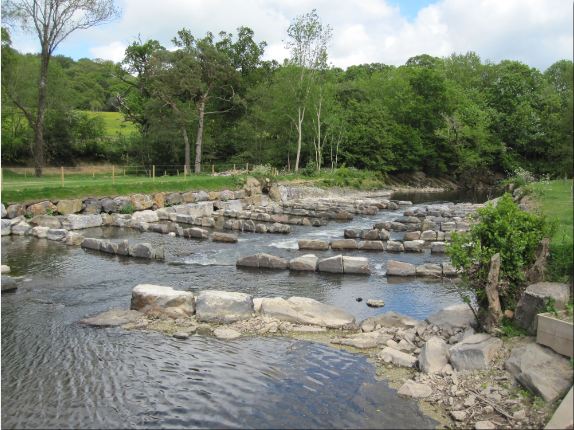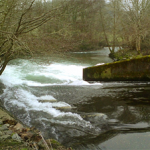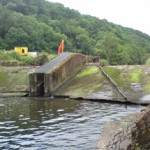In 2009 the Westcountry Rivers Trust, in collaboration with a consortium of riparian owners and the Environment Agency, secured funding in excess of £200,000 to undertake the replacement of Head Weir on the River Mole, one of the main tributaries of Devon’s River Taw. The project was designed to replace the old weir and fish pass with a state-of-the-art pool and riffle system that will be the first of its kind in Britain.
Of the total funds raised, the WRT secured £130,000 of DEFRA funding through the National Association of Rivers Trusts, and raised a further £75,000 from land and river owners in the River Taw catchment.
The Trust commissioned the EA’s Operations Delivery Team to undertake the work and, in spring 2010, the work began to remove the old weir. The old Head Weir (shown below left and centre) was a 2m high smooth-faced concrete shute that, despite having a fish pass on it, was regarded by many as an almost complete barrier to fish migration up the River Mole to the large spawning and nursery areas that are known to exist in its headwaters.
- The old Head Weir in operation
- The old Head Weir from below
- The new pool and riffle system
Now, as October draws to an end, and following six months of complex and sometimes arduous work, the old structure has gone and has been replaced by a spectacular and innovative structure that will transform the ecology of the River Mole.
The new pool and riffle system, which is nearing its completion, is a 60 metre long run of embedded tombstone-shaped boulders set at 5m intervals to create a stepped-pool system with a 1 in 30 gradient (shown above right). The structure will create a diverse array of flow and channel characteristics that will open the river up to fish migration in high and low flow conditions and yet still serve to divert some flow into the mill leat of the historic Head Mill (the original reason for there being a weir on the site).




